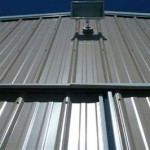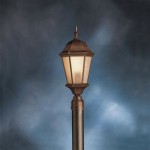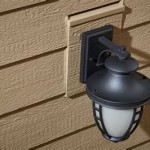Is Outdoor Patio Furniture Waterproof? Understanding Water Resistance and Protection Strategies
The allure of outdoor living is undeniable. Patios, decks, and gardens serve as extensions of the home, offering space for relaxation, entertainment, and connection with nature. Integral to these outdoor spaces is patio furniture, which provides comfort and functionality. However, a crucial question often arises: is outdoor patio furniture truly waterproof? The answer is more nuanced than a simple yes or no. This article will explore the concept of water resistance in outdoor furniture, differentiate it from waterproofing, and discuss strategies to protect patio furniture from the elements.
The term "waterproof" implies that a material is completely impervious to water, preventing any water penetration whatsoever. In the realm of outdoor furniture, this is rarely the case. While some materials offer a high degree of water resistance, achieving complete waterproofing is often impractical and can compromise other desirable qualities, such as breathability and comfort. Instead, the focus is typically on water-resistant materials and construction techniques that minimize water absorption and promote quick drying.
Understanding the distinction between waterproof and water-resistant is paramount. Water-resistant materials can withstand exposure to water for a certain period without significant damage or absorption. This resistance is often achieved through coatings, treatments, or the inherent properties of the material itself. However, prolonged or intense exposure to water can still lead to water penetration, especially at seams, joints, or areas where the protective coating has worn away. Therefore, considering the level of water resistance is essential when selecting patio furniture.
Key Point 1: Understanding Different Levels of Water Resistance
Patio furniture materials exhibit varying degrees of water resistance, influencing their suitability for different climates and exposure levels. Several factors contribute to this variation, including the type of material used, the application of protective coatings, and the design of the furniture.
Wood: Wood, a classic choice for outdoor furniture, possesses natural water resistance due to its cellular structure. However, untreated wood is susceptible to water damage, including rot, mold, and warping. Therefore, wood furniture is typically treated with sealants, paints, or stains to enhance its water resistance. Different types of wood also offer varying levels of inherent resistance. For example, teak and cedar are naturally more water-resistant than pine or fir due to their higher oil content. Regular maintenance, including reapplication of protective coatings, is crucial to prolong the lifespan of wooden patio furniture.
Metal: Metal furniture, such as aluminum and stainless steel, is generally more water-resistant than wood. Aluminum is naturally rustproof, making it an excellent choice for outdoor use. Stainless steel is also highly resistant to corrosion, although it can be susceptible to pitting if exposed to salt water or harsh chemicals. Powder coating is often applied to metal furniture to provide an additional layer of protection against water and the elements. This coating creates a durable, water-resistant barrier that helps prevent rust and corrosion.
Plastic and Resin: Plastic and resin furniture are typically highly water-resistant and often marketed as waterproof. These materials are non-porous, meaning they do not absorb water. Recycled plastic lumber is a popular choice for outdoor furniture as it is durable, weather-resistant, and environmentally friendly. However, even plastic and resin furniture can be susceptible to damage from prolonged exposure to sunlight, which can cause fading and cracking. UV inhibitors are often added to these materials to minimize sun damage.
Fabric: Outdoor furniture cushions and upholstery are often made from synthetic fabrics like polyester, acrylic, or olefin. These fabrics are chosen for their water resistance, durability, and resistance to fading. Solution-dyed acrylic fabrics, such as Sunbrella, are particularly popular for outdoor cushions because the color is integrated into the fibers, making them highly resistant to fading and staining. While these fabrics are water-resistant, they are not entirely waterproof. Water can eventually penetrate through seams and zippers, so it is essential to protect cushions during heavy rain or prolonged exposure to moisture.
Key Point 2: Construction and Design Considerations for Water Resistance
Beyond the materials used, the construction and design of patio furniture significantly impact its ability to withstand water damage. Features like drainage systems, joint construction, and the overall design can either promote or hinder water resistance.
Drainage: Properly designed patio furniture incorporates drainage systems to allow water to escape quickly. This can include gaps between slats on chairs and tables, as well as drainage holes in cushions and seat frames. These features prevent water from pooling, reducing the risk of water damage and mold growth.
Joint Construction: The way furniture joints are constructed plays a crucial role in its water resistance. Joints that are tightly sealed and properly fastened prevent water from seeping into the interior of the furniture. Using marine-grade adhesives and sealants can further enhance the water resistance of joints, especially in wood furniture.
Frame Design: The overall design of the furniture frame can also affect its water resistance. Frames that are elevated off the ground reduce the risk of water damage from standing water or damp surfaces. Frames with smooth, rounded surfaces allow water to run off easily, preventing it from collecting in crevices.
Cushion Design: Cushion construction is particularly important for water resistance. Cushions made with open-cell foam allow water to drain more easily than those made with closed-cell foam. Using a breathable, water-resistant liner between the foam and the outer fabric can further protect the cushion from water damage. Zippers should be covered with flaps to prevent water from seeping in.
Key Point 3: Strategies to Protect Patio Furniture from Water Damage
Regardless of the water resistance of patio furniture, implementing proactive strategies to protect it from water damage is essential for extending its lifespan and maintaining its appearance. These strategies range from simple preventative measures to more involved storage solutions.
Furniture Covers: Investing in high-quality furniture covers is one of the most effective ways to protect patio furniture from water damage. Covers should be made from breathable, water-resistant fabric that allows moisture to escape while preventing rain and snow from penetrating. The covers should fit snugly around the furniture to prevent wind from blowing them off. Regularly cleaning the covers is also important to prevent the build-up of dirt and mildew.
Proper Storage: During periods of heavy rain, snow, or extreme weather, storing patio furniture indoors is the best way to protect it from water damage. If indoor storage is not feasible, storing the furniture in a shed, garage, or under a covered patio can provide some protection. When storing furniture, ensure it is clean and dry to prevent mold and mildew growth.
Regular Cleaning and Maintenance: Regularly cleaning patio furniture helps to remove dirt, debris, and mildew that can contribute to water damage. Use a mild soap and water solution to clean the furniture, and rinse thoroughly with a hose. For wood furniture, reapply sealant or stain as needed to maintain its water resistance. Inspect the furniture regularly for signs of damage, such as cracks, rust, or mildew, and address these issues promptly.
Elevated Placement: Placing patio furniture on a slightly elevated surface, such as a deck or patio, can help to prevent water damage from standing water. Using furniture feet or risers can also help to lift the furniture off the ground, improving air circulation and reducing the risk of moisture build-up.
Water Repellent Treatments: Applying water repellent treatments to patio furniture can enhance its water resistance. These treatments create a protective barrier that repels water and prevents it from soaking into the material. Be sure to choose a water repellent treatment that is specifically designed for the type of material you are treating, and follow the manufacturer's instructions carefully.
In conclusion, while the term "waterproof" may not be entirely accurate when describing outdoor patio furniture, many materials and construction techniques offer excellent water resistance. By understanding the different levels of water resistance, considering design elements that promote water drainage, and implementing proactive protection strategies, homeowners can ensure that their patio furniture remains beautiful and functional for years to come. Regular maintenance and careful storage are essential components of this process, ensuring a long-lasting and enjoyable outdoor living space.

Is Patio Furniture Waterproof 4patio Com

Waterproof Outdoor Furniture With Modern And Sophisticated Designs

Waterproof Outdoor Furniture With Modern And Sophisticated Designs

Is Patio Furniture Waterproof Ions

Patio Furniture 2024 Waterproof Outdoor With Storage China Made In Com

Patio Furniture Barouse Hotel Outdoor Rotan Cina Sofa Luar Ruang Furnitur

Waterproof Outdoor Furniture With Modern And Sophisticated Designs

Is Bramblecrest Garden Furniture Waterproof

Sunrinx 7 Piece Outdoor Patio Furniture Set With White Chushions And Waterproof Cover Mg20 25hwjj The Home Depot

An Easy Way To Waterproof Patio Furniture The Diy Playbook
Related Posts







